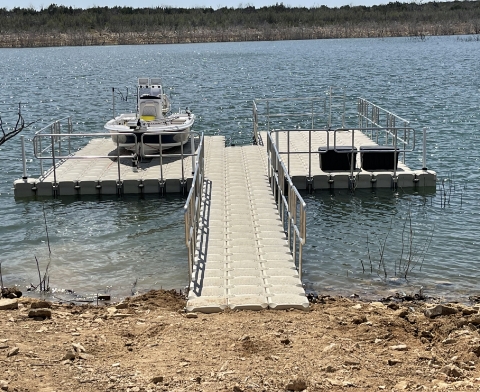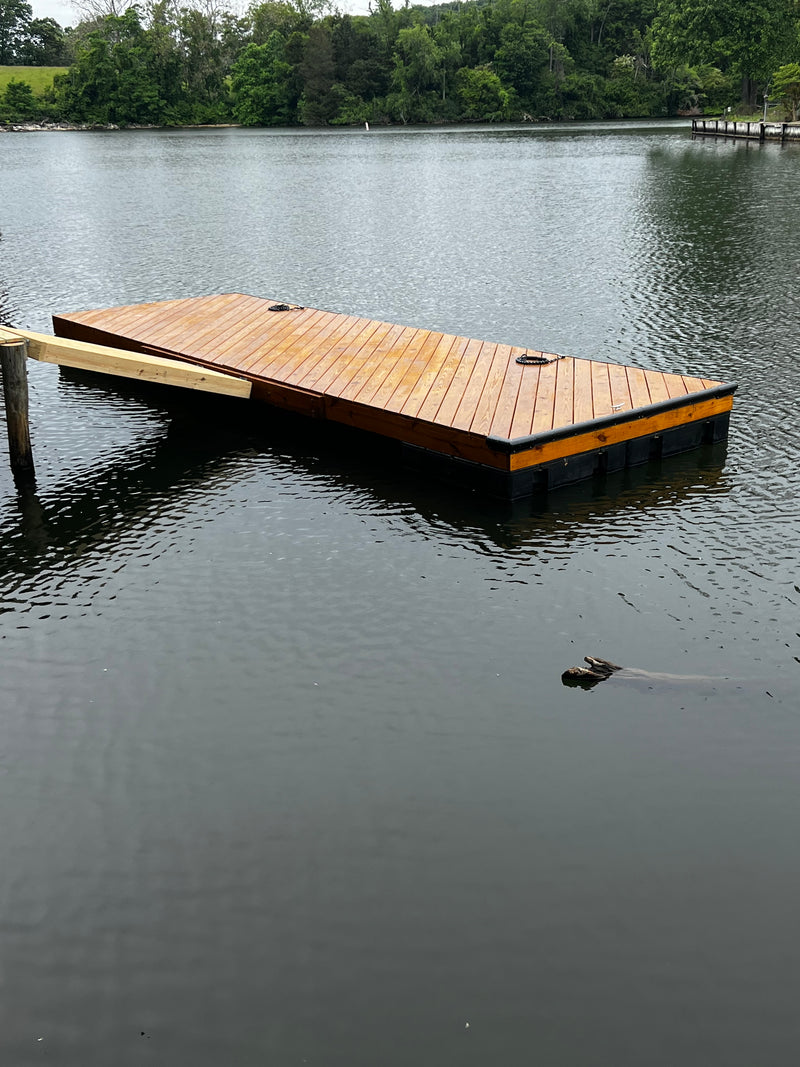How to Select the Right Floating Dock Builder for Your Custom-made Dock Requirements
The Ultimate Guide to Choosing the Ideal Floating Docks
Picking the optimal floating dock calls for a thorough understanding of various components that affect both performance and longevity. Variables such as dock types, products, and necessary features considerably influence your decision-making procedure.
Recognizing Floating Dock Kind
When picking a floating dock, it is important to recognize the numerous kinds available, as each serves unique purposes and applications. Floating docks mostly fall under 3 groups: modular, stationary, and pontoon docks.
Modular docks are made up of private sections that can be easily constructed or reconfigured, making them ideal for transforming water levels and varied usages, such as industrial operations or entertainment tasks. Their versatility enables modification based on certain demands.

Pontoon docks are identified by their buoyant structure, typically made up of numerous pontoons that give security and assistance. They are specifically well-suited for bigger vessels and are generally utilized in marinas or for beachfront buildings. Understanding these kinds aids in choosing the most ideal floating dock to satisfy specific requirements, ensuring optimal functionality and safety.
Key Materials for Longevity
Selecting the ideal materials for floating docks substantially impacts their resilience and durability. The most common materials include timber, plastic, metal, and composite products, each offering distinct benefits and restrictions.
Wood, usually preferred for its visual charm, requires normal maintenance to withstand dampness and decay. Pressure-treated lumber can boost resistance to rot, but it may still be at risk to bugs and weathering.

Plastic docks, constructed from high-density polyethylene (HDPE), are immune to corrosion, UV radiation, and effect, making them a prominent option for seaside environments. Their light-weight nature likewise promotes simple installment and relocation.
Steel docks, commonly constructed from light weight aluminum or galvanized steel, supply phenomenal stamina and sturdiness. They are resistant to deterioration, specifically when dealt with, yet may need added insulation to stop warm build-up in warm climates.
Composite materials, combining wood fibers and plastics, supply the benefits of both timber and plastic, resisting wetness and fading while needing very little upkeep. - floating dock builder
Eventually, the choice of materials ought to align with environmental problems, intended use, and upkeep preferences to guarantee the floating dock stays functional and cosmetically pleasing over time.
Essential Functions to Take Into Consideration
While the choice of materials is crucial, taking into consideration necessary attributes for floating docks is similarly crucial to make certain ideal performance and customer satisfaction. One vital function to evaluate is the dock's buoyancy ability, which figures out how much weight it can support without submerging. floating docks. This is vital for suiting watercrafts, personal watercraft, and also entertainment activities
Furthermore, transportability is a considerable consideration. Depending on your demands, you may want a dock that is easy to carry and disassemble, especially if you prepare to transfer it seasonally. Security is an additional vital function; a properly designed floating dock must lessen movement brought on by wind and water currents, offering a safe platform for individuals.
Safety features, such as non-slip surfaces and rounded sides, are likewise essential to stop crashes, specifically in damp conditions. Additionally, think about the accessibility of devices, such as cleats, ladders, and bumpers, which can boost the functionality of your dock.
Installation and Upkeep Tips
Setting up and maintaining a drifting dock needs mindful planning and interest to information to guarantee its durability and optimum efficiency. Begin by selecting a suitable location that decreases direct exposure to strong currents and waves, which can create wear and tear. Make certain that the water depth suffices for the dock's elevation and that it is anchored firmly to avoid movement.
During installation, follow the producer's standards closely, as improper assembly can compromise security. Use premium products resistant to corrosion, such as aluminum or treated timber, to boost toughness. Frequently examine all components, including floats, adapters, and securing systems, for indications of damages or wear.
Upkeep is vital for extending the life of your dock. Tidy the surfaces regularly to protect against algae build-up and look for any kind of loosened installations that may call for tightening up. Ensure they check out here stay free and undamaged from leaks if your dock makes use of flotation gadgets. In addition, consider using protective finishes to wooden parts to lower weathering impacts. By sticking to these installation and maintenance suggestions, you can enjoy a functional and dependable floating dock for many years ahead.
Budgeting for Your Dock
Budgeting for your dock is an essential action that can considerably impact your general contentment and financial investment in a waterside residential property. Establishing a clear spending plan aids you navigate the numerous choices offered and ensures you make informed decisions that straighten with your monetary capacities.
Begin by establishing the size click here to read and layout of the dock you call for, as these elements will substantially influence the expense. Floating docks can differ dramatically in rate, depending on products, buoyancy, and attributes like ramps and devices. Research different manufacturers and distributors to compare rates and understand the marketplace value.
In addition to first costs, take into consideration ongoing costs such as upkeep, insurance, and prospective fixings. Assign funds for these reoccuring costs to avoid surprises down the line. It's likewise prudent to budget plan for any type of required licenses or examinations, which may be required by local regulations.
Last but not least, maintain in mind the possible return on financial investment. A tactical dock can boost your home's value and allure, providing a positive financial influence in the long-term. By budgeting successfully, you can guarantee that your dock satisfies your needs without compromising your monetary security.
Conclusion
To conclude, choosing the ideal floating dock demands a comprehensive analysis of various elements, including dock kinds, products, vital features, and installation processes. Focusing on resilience and conformity with regional guidelines ultimately enhances functionality and property value. Cautious factor to consider of budgetary restrictions will further guarantee a sound financial investment. By sticking to these guidelines, people can make enlightened choices that advertise lasting fulfillment and usability in aquatic atmospheres.

While the choice of products is important, thinking about essential functions for floating docks is similarly essential to make certain ideal performance more helpful hints and user contentment.Setting up and keeping a drifting dock requires cautious planning and interest to detail to guarantee its durability and ideal performance. Floating docks can vary dramatically in cost, depending on materials, buoyancy, and attributes like ramps and devices.In conclusion, choosing the perfect floating dock demands a comprehensive evaluation of different factors, consisting of dock types, products, important functions, and installment procedures.